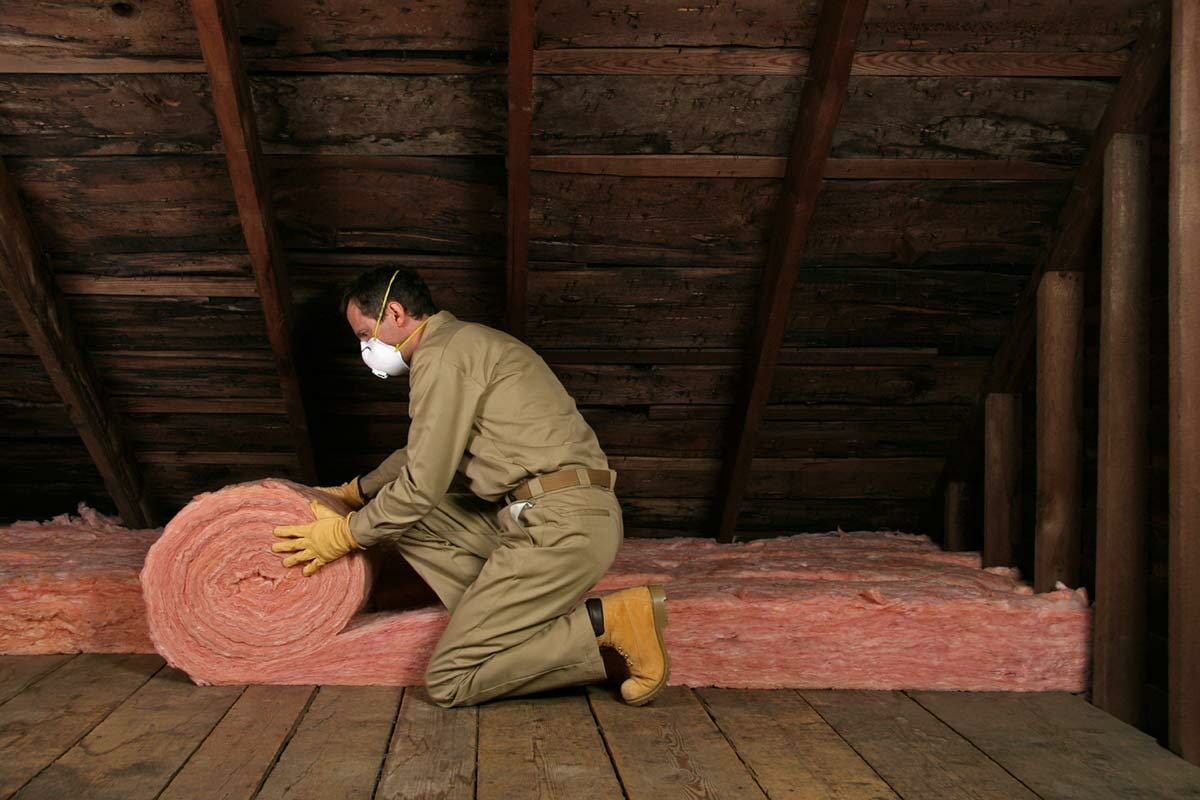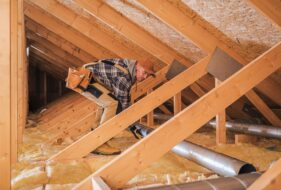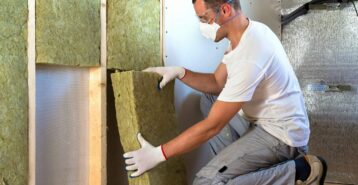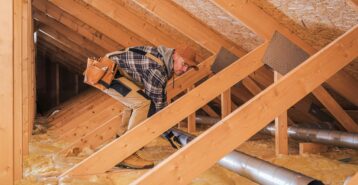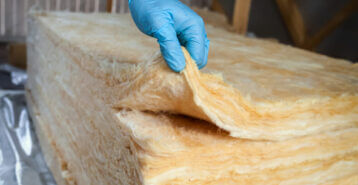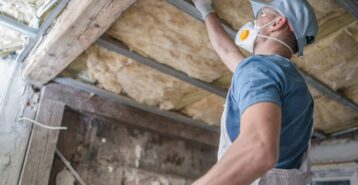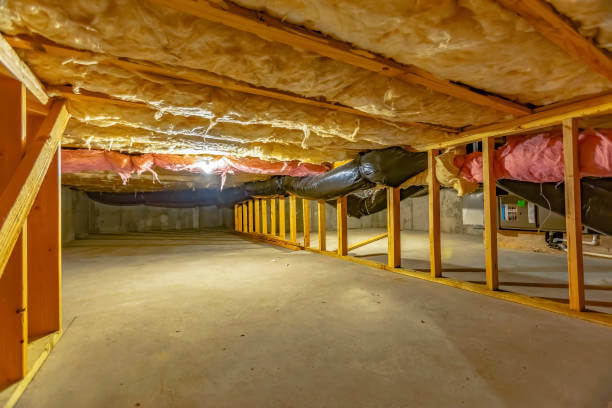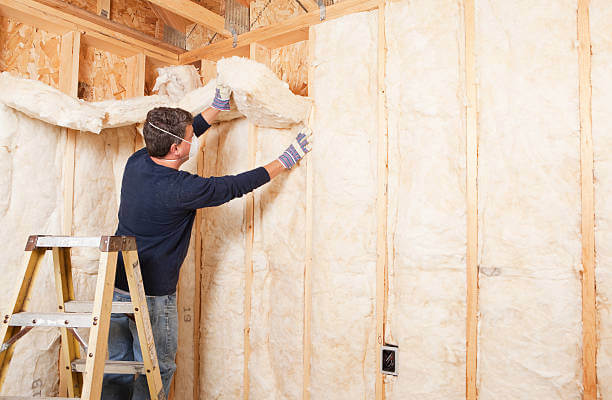Attic Insulation Installation: An Essential Home Upgrade
Attic insulation plays a critical role in maintaining the comfort of your home while improving energy efficiency. Without proper insulation, heat escapes from your home in winter, and hot air enters during the summer, forcing your HVAC system to work harder to reach and maintain your ideal temperature. As a result, your energy bills rise and your home can become uncomfortable.
When you choose to install new attic insulation, you create a barrier that traps air and helps to regulate temperature, making your home more energy-efficient and therefore cost-effective. Having a pulse on your home’s HVAC efficiency will ensure you have attic insulation installed at the right time to prevent escalating costs. Keep in mind that old and neglected attic insulation can cause high energy bills and become more costly to replace over time.
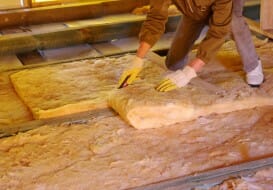
What Is Attic Insulation and Why Does It Matter?
Attic insulation includes a range of materials that are installed in the attic of a home to help resist heat transfer. In the winter, it prevents warm air from escaping, and in the summer, it keeps hot air from entering. As mentioned, proper insulation helps your home maintain temperature efficiently, thereby keeping your energy usage and bills in check. Attic insulation also plays a key role in reducing moisture buildup, preventing mold growth, and improving the overall air quality in your home.
Types of Attic Insulation
There are several types of insulation, each with its unique benefits, costs, applications and R-values. R-values are a rating system used to measure a material’s thermal resistance and therefore effectiveness.
1. Fiberglass Insulation
Fiberglass is a material made by melting glass and spinning it into fibers. This man-made material is often a yellow or pinkish color and comes in large rolls resembling cotton candy.
- Pros: Affordable, widely available, effective at reducing heat transfer, and non-combustible.
- Cons: Can irritate the skin and respiratory system if not handled properly. Performance can decrease over time if it gets wet.
- Best For: Homeowners on a budget or those who are insulating larger attics.
2. Spray Foam Insulation
Spray foam insulation is a liquid polyurethane foam that is sprayed onto your attic rafters with a spray gun. The liquid quickly expands to fill in gaps and cracks then hardens. The finished product appears white and fluffy like clouds.
- Pros: Excellent at sealing gaps and cracks, offers high R-value per inch, and helps prevent air leaks.
- Cons: Expensive, requires a professional to install this attic insulation, and may release fumes during installation.
- Best For: Homes in areas with extreme temperatures or attics that have irregular shapes and require air sealing.
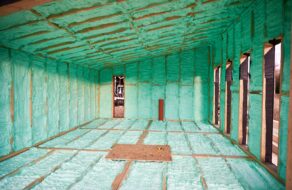
3. Cellulose Insulation
Cellulose is an environmentally friendly insulation option made with recycled paper products and resembles a fine, papery compost like material. It can be densely packed or come in loose-fill and wet-spray applications.
- Pros: Made from recycled paper products, eco-friendly, effective at blocking air leaks, and good for filling gaps.
- Cons: Can be prone to settling over time, reducing its effectiveness.
- Best For: Homeowners seeking an environmentally friendly option with good thermal performance.
4. Rock Wool Insulation
Rock wool insulation, also known as mineral wool, is made with a combination of natural rocks and recycled materials. The finished products comes in rolls of yellow-ish materials resembling a mix between cellulose and fiberglass insulation.
- Pros: Fire-resistant insulation option, good soundproofing qualities, and resistant to moisture.
- Cons: More expensive than fiberglass and heavier, which may require additional support for installation.
- Best For: Homeowners in fire-prone areas or those seeking additional soundproofing.
Attic Insulation Installation Process
Installing attic insulation involves several steps. First, a professional will assess your attic’s current insulation, the existing condition of the space, and any issues that may affect installation, such as air leaks or moisture problems.
Next, the crew will remove any outdated or damaged insulation. Before installing new insulation, the crew will seal any gaps or cracks in your attic that allow air to escape. The selected insulation material is then installed. The type and thickness of insulation will depend on your climate and home’s energy needs.
After installation, the attic is inspected to ensure the insulation is properly installed and effectively covering all areas. An energy audit may also be conducted to verify the efficiency improvements.
How Much Does Attic Insulation Installation Cost in 2025?
In 2025, the cost of installing attic insulation typically ranges from $1,000 to $4,000, with the average homeowner spending about $2,200 to $3,000 for a 1,000 square foot attic. Factors such as the size of the attic, the insulation material used, and any additional services – such as air sealing or removal of old insulation – will influence the final cost. For example:
- Fiberglass Insulation: Typically ranges from $1,000 to $2,500 for an average-sized attic.
- Spray Foam Insulation: Can cost between $2,000 and $4,000 depending on the attic’s size and the extent of coverage.
- Cellulose Insulation: Costs around $1,500 to $3,000.
- Rock wool Insulation: Generally falls in the $2,000 to $3,500 range.
Be sure to account for additional expenses such as labor and the potential removal of old insulation when budgeting for your installation project.
Factors Affecting Attic Insulation Installation Costs
Several factors can impact the cost of attic insulation installation:
- Attic Size: Larger attics require more materials and labor, driving up costs.
- Type of Insulation: High-performance materials like spray foam are more expensive than fiberglass or cellulose.
- Labor Rates: Costs can vary based on location and the experience of the installers.
- Additional Services: Services like air sealing or old insulation removal can add to the overall cost.
- Geographic Location: Costs can vary depending on where in the country you live, as certain areas may have higher labor rates or different material costs.
- Insurance, Grants and Rebates: Some homeowners may find that their insurance policy covers part of the costs, particularly if the installation is needed due to weather-related damage or a home improvement grant. In addition, rebates are available through several states and utility providers when you make these upgrades on your home.
Why Attic Insulation Installation Is Best Left to Professionals
While going the DIY route to install attic insulation may seem like a cost-saving option, it is a major undertaking that is best left to professionals. Improper installation can lead to reduced efficiency, increased energy costs, and potential damage to your home. Professionals have the tools and experience to handle the materials safely, ensure that insulation is evenly distributed, and address any underlying issues, such as air leaks or moisture problems. Additionally, many insulation materials, such as spray foam, require specialized equipment and expertise for safe and effective installation.
Signs That Your Attic Needs Insulation
Several signs indicate your attic insulation may need to be updated or replaced:
- High Energy Bills: If your energy bills have increased despite no change in your habits, poor attic insulation could be to blame.
- Drafts: Feeling cold drafts in winter or experiencing an uncomfortably warm attic in summer can signal insufficient insulation.
- Frozen Pipes: Insufficient insulation in the attic can lead to pipes freezing during the winter months. Keep an eye out for this potential.
- Ice Dams: If you notice ice dams or icicles forming on your roof or gutters, it could be a sign that your attic is poorly insulated.
- Uneven Temperatures: Rooms near the attic might feel unusually hot or cold compared to the rest of the house.
The Long-Term Benefits of Proper Attic Insulation
Proper attic insulation installation offers long-term benefits that can significantly improve your home’s efficiency and value.
Mainly, good insulation can lower your energy bills and increase your comfort in your home. These upgrades also enhance your home’s property value. Homes with high-quality insulation are more energy-efficient, which is an attractive selling point for potential buyers.
Finally, reducing your energy consumption with proper insulation can lower your carbon footprint, contributing to a greener environment.
